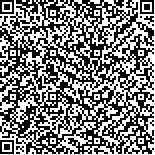|
|
| |
|
|
| 本文已被:浏览 413次 下载 380次 |

码上扫一扫! |
|
|
| 小儿积滞病中医证候疗效评价量表的编制和北方地区检验 |
|
李瑞本1,2, 马延宁1,2, 胡思源1,2, 吴力群3, 张葆青4, 薛征5, 闫永彬6, 郭素香7, 刘虹1,2, 胡淑萍1,2, 魏小维1,2, 成天萌1,2, 陆艳泓1,2, 吴钰仪1,2, 张依1,2
|
|
1.天津中医药大学第一附属医院儿科, 天津 300381;2.国家中医针灸临床医学研究中心, 天津 300381;3.北京中医药大学东方医院儿科, 北京 100078;4.山东中医药大学附属医院儿科, 济南 250011;5.上海市中医医院儿科, 上海 200071;6.河南中医药大学第一附属医院儿科, 郑州 451100;7.天津中医药大学第二附属医院儿科, 天津 300250
|
|
| 摘要: |
| [目的] 编制小儿积滞病中医证候疗效评价量表并进行信度、效度和反应度检验,为小儿积滞病临床评价提供量表依据。[方法] 主要采用文献研究法、德尔菲法、小范围测试编制量表;利用探索性因子分析法、相关系数法、克朗巴赫系数(Cronbach’s α系数)法等对量表的信度、效度及反应度进行检验。[结果] 通过文献研究法构建了包含46个条目的评价量表条目池;经2轮德尔菲问卷,形成具有24个条目的初级评价量表;通过小范围测试,优化为具有21个条目的评价量表;探索性因子分析删除3个条目,剩余18条目共提取合并7个公因子,累计方差贡献率为68.76%;内容效度为0.359~0.931;重测信度为0.797~0.926;分半信度为0.798;内部一致性均>0.4;反应度中,量表总分及各维度得分在积滞患儿与非积滞患儿、积滞患儿自身治疗前后方面的差异均具有统计学意义(P<0.05)。[结论] 《小儿积滞病中医证候疗效评价量表》具有良好的信度、效度和反应度,可用于北方地区小儿积滞病常见中医证候的临床疗效评价,在南方地区的使用待进一步检验。 |
| 关键词: 小儿积滞 证候疗效 量表编制 信度 效度 反应度 |
| DOI:10.11656/j.issn.1672-1519.2022.07.08 |
| 分类号:R272.6 |
| 基金项目:“十三五”国家科技重大专项-重大新药创制项目(2020ZX09201-008)。 |
|
| Construction and test in northern China of traditional Chinese medicine syndromes efficacy evaluation scale for accumulation and stagnation in children |
|
LI Ruiben1,2, MA Yanning1,2, HU Siyuan1,2, WU Liqun3, ZHANG Baoqing4, XUE Zheng5, YAN Yongbin6, GUO Suxiang7, LIU Hong1,2, HU Shuping1,2, WEI Xiaowei1,2, CHENG Tianmeng1,2, LU Yanhong1,2, WU Yuyi1,2, ZHANG Yi1,2
|
|
1.Department of Pediatrics, First Teaching Hospital of Tianjin University of Traditional Chinese Medicine, Tianjin 300381, China;2.National Clinical Research Center for Chinese Medicine Acupuncture and Moxibustion, Tianjin 300381, China;3.Department of Pediatrics, Dongfang Hospital of Beijing University of Chinese Medicine, Beijing 100078, China;4.Department of Pediatrics, Affiliated Hospital of Shandong University of Traditional Chinese Medicine, Jinan 250011, China;5.Department of Pediatrics, Shanghai Municipal Hospital of Traditional Chinese Medicine, Shanghai 200071, China;6.Department of Pediatrics, The First Affiliated Hospital of Henan University of Chinese Medicine, Zhengzhou 451100, China;7.Department of Pediatrics, Second Teaching Hospital of Tianjin University of Traditional Chinese Medicine, Tianjin 300250, China
|
| Abstract: |
| [Objective] Construct and test the evaluation items of traditional Chinese medicine(TCM) syndromes efficacy evaluation scale,so as to provide the scale basis for the clinical evaluation of children's accumulation and stagnation.[Methods] Literature research method,Delphi method and clinical investigation method are mainly used,and exploratory factor analysis method,correlation coefficient method and Cronbach's α coefficient are used to test the reliability,validity and responsiveness of the scale.[Results] The item pool of evaluation scale containing 46 items was constructed by literature research method. After 2 rounds of Delphi questionnaire,a primary evaluation scale with 24 items was formed. Through a small-scale test,it was optimized into an evaluation scale with 21 items;Exploratory factor analysis deleted 3 items,extracted and combined 7 common factors from the remaining 18 items,and the cumulative variance contribution rate was 68.76%. The content validity was 0.359 to 0.931. The test-retest reliability ranged from 0.797 to 0.926. The split half reliability was 0.798. The internal consistency was >0.4. There were significant differences in the total score of the scale and the scores of each dimension between patient and healthy children and patient before and after treatment (P<0.05).[Conclusion] The TCM Syndromes Efficacy Evaluation Scale for Accumulation and Stagnation in Children has good reliability,validity and responsiveness,so it can be used to evaluate the clinical efficacy of common TCM syndromes of accumulation and stagnation in children in the north,and its use in the south still needs to be further tested. |
| Key words: accumulation and stagnation in children TCM syndromes efficacy scale construction reliability validity reactivity |
|
|
|
|
